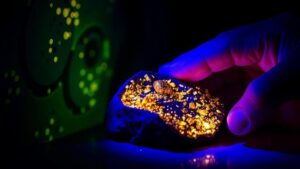Recovering Gold From Natural Vortex Zones in River Currents
Recovering Gold From Natural Vortex Zones in River Currents
Gold recovery from natural water bodies has a long-standing history, particularly in regions rich in mineral deposits. One interesting phenomenon in this context is the natural vortex, which occurs in river currents. These areas can accumulate valuable materials, including gold. This article explores the mechanics of vortex zones, methods for gold recovery, and the environmental implications of such activities.
Understanding Natural Vortex Zones
Natural vortex zones are locations in river systems where the flow of water creates a rotating current. This effect can lead to the concentration of heavy materials, such as gold, as lighter particles are carried downstream. Vortex zones can be found in various river environments, particularly in areas with high turbulence or obstructions such as rocks and fallen trees.
The formation of a vortex occurs due to several factors:
- Water Speed: Increased flow velocity can create stronger vortices.
- Obstructions: Natural barriers disrupt the flow, causing water to swirl.
- Geography: Curved riverbanks or narrowing channels lead to rapid water movement.
The Science of Gold Recovery
Gold recovery in natural vortex zones typically employs methods derived from both traditional prospecting and modern mining techniques. primary focus is on utilizing gravity separation, a method that exploits the differences in density between gold and other materials.
Key methods of gold recovery include:
- Panning: This traditional technique involves using a pan to sift through sediment. The pan is filled with sediment from the vortex area and submerged in water. Due to golds high density, it settles at the bottom as lighter materials are washed away.
- Sluicing: A sluice box can be placed in a vortex area to capture gold particles. Water flows through the box, and riffles inside trap heavier materials while allowing lighter sediment to wash away.
- Highbanking: This method uses a pump to move materials from a riverbank into a sluice box, increasing the volume of sediment processed and potentially yielding greater amounts of gold.
Case Studies of Gold Recovery
Various case studies illustrate the effectiveness of recovering gold from vortex zones. In 2019, a group of amateur prospectors in Alaska reported a significant yield from a natural vortex on the Kuskokwim River using sluicing techniques. Their results highlighted the productivity of such natural formations in areas known for placer gold deposits.
Similarly, in Australia, research conducted by the Geological Survey revealed that focusing on vortex zones in the Fitzroy River yielded high concentrations of fine gold, leading to an increase in local small-scale mining operations. survey emphasized the importance of understanding river dynamics in maximizing recovery efforts.
Environmental Considerations
While recovering gold from natural vortex zones can be lucrative, it is imperative to consider the environmental impact of such activities. Disturbing riverbeds can lead to sediment displacement, potentially harming aquatic ecosystems. Also, the extraction of materials can increase turbidity in the water, affecting local fish populations and water quality.
To mitigate these concerns, regulations and best practices should be enforced, including:
- Sustainable Mining Practices: Useing techniques that minimize environmental disruption.
- Monitoring Ecosystems: Regular assessments to ensure aquatic life is not adversely affected.
- Licensing and Regulation: Establishing a framework for responsible mining within ecological guidelines.
Conclusion and Actionable Takeaways
Recovering gold from natural vortex zones provides both opportunities and challenges. Understanding the dynamics of river currents and implementing appropriate recovery methods is crucial for success. But, it is equally important to maintain a balance with environmental stewardship to protect natural resources.
As prospective miners consider venturing into gold recovery, they should:
- Study local river systems to identify potential vortex zones.
- Familiarize themselves with sustainable gold recovery techniques.
- Engage with local regulations to ensure compliance and protect the environment.
By adhering to these guidelines, individuals can responsibly engage in gold recovery while contributing to the conservation of vital ecosystems.

